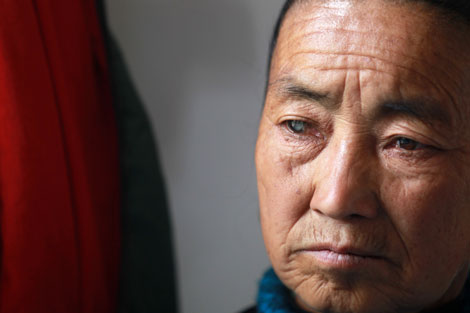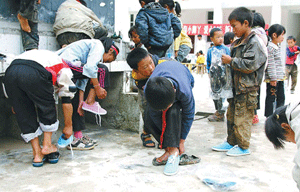Draft regulation allows bacteria in frozen food
Updated: 2011-11-24 07:42
By Zhou Wenting (China Daily)
|
|||||||||
Microbes in small quantities will not compromise quality, say experts
BEIJING - A new draft, released by the Ministry of Health in September, allowing the existence of staphylococcus aureus - a currently prohibited bacterium - in frozen food, has attracted wide attention, especially given that four major manufacturers of frozen food in the country have been accused of producing bacteria-contaminated food in the past two months.
The draft does not necessarily suggest compromising the quality of frozen food by allowing the detection of a prohibited pathogenic bacterium, say food safety experts.
The draft said five packs of a batch will be tested as part of spot checks on frozen food, and, at the most, one pack containing the bacterium from 1,000 to 10,000 in number in each gram of the food, would be passed.
The current practice is to have one pack tested as part of every spot check. An entire batch of products is identified as faulty if the sample is found to contain the bacterium.
"This is the international practice to test microorganism. Many countries allow existence of the bacterium in frozen food within a specific range," said Dong Jinshi, executive vice-president of the International Food Packaging Association.
Besides, he said "it is more scientific to determine microbial contamination by testing a batch of food, rather than test just one sample. It's very likely that this pack carries the bacterium, but a neighboring one doesn't."
On Nov 17, the administration for industry and commerce in Nanjing, Jiangsu province, published the result of a quality monitoring of frozen dumplings. Out of 35 test samples of different products and brands, nine failed the check, and eight of these failed the test for staphylococcus aureus, including a wonton product by Wanchaiferry produced by Shanghai Pillsbury Frozen Food Co Ltd and a dumpling product produced by Zhengzhou Sanquan Foods Co Ltd.
Sanquan as well as another two major brands of quick-frozen snacks - Synear and Haipawang - have also been on the blacklist for containing the bacterium after checks run by Beijing and Guangzhou market authorities in October and November.
Sanquan announced an immediate recall of the problematic batch on Tuesday.
But the Shanghai company has applied for a recheck of its products.
"The Ministry of Health issued a document on Nov 11, elaborating that staphylococcus aureus commonly exists in nature in a small amount, and is harmless after cooking," reads a statement from the company sent to the media.
Staphylococcus aureus is widely distributed in the atmosphere, soil, and is heat-sensitive. It is killed after being subjected to 80 C heat for 30 minutes, according to the health authority.
Doctors said humans and animals were the main carriers of the bacterium, which was produced by pustules on the skin.
It was a toxin generated by the bacterium in certain circumstances, rather than the presence of the bacterium itself, that was likely to cause food poisoning, said doctors.
"So the bacterium is not poisonous," said Wang Xingguo, director of nutrition department at Dalian Municipal Central Hospital.
He said the toxin was generated only when four conditions happened simultaneously: a temperature around 30 C, a long exposure to the above temperature, the presence of a bacterium in large amounts and the food in question being of high nutritional value. "So it's hard for frozen food to produce poison in a cold chain."
He also agreed that the new draft did not signify a step backwards for national standards.
"The test equipment will sound an alert only when the bacterium reached a certain number," Wang said.
He also said the bacterium will be killed within three minutes of boiling in water, while cooking dumplings.
However, this does not mean the bacterium cannot be eradicated from food processing, say experts.
"If food businesses do a better job of maintaining a low temperature at cold storages, ensure that the workers are not carrying an infection, separate the storage of raw food material and end products, we could prevent frozen food from being affected by the bacterium," Dong said.
"But that's costly. It's a tough balancing act between maintaining standards, keeping the price reasonable, and catering to consumer needs," he said.











